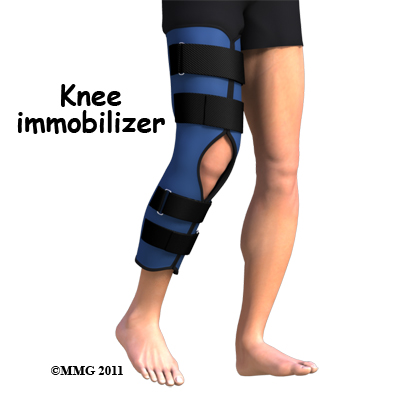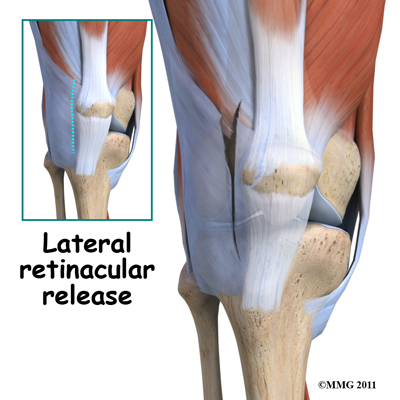Rehabilitation after surgery for bipartite patella should begin as soon as your surgeon indicates that it is safe to do so. What has been done in surgery will determine whether you need a period of immobilization or rest before beginning rehabilitation. Each surgeon will set his or her own specific restrictions regarding when to begin treatment at Emerald Hills Physio & Sports Clinic based on what was done during the surgical procedure, their personal experience, and whether your tissues are healing as expected.
You may be required to use crutches for a short period after your surgery. If you are still using crutches by the time we first see you at Emerald Hills Physio & Sports Clinic, your physiotherapist will ensure you are using the crutches safely, properly, and confidently, and that you are abiding by your weight bearing restrictions if you have been given any. We will also ensure that you can safely use your crutches on stairs. If you are no longer using crutches, or once you no longer need them, your physiotherapist will focus on normal gait re-education so you are putting only the necessary forces through your surgical side with each step, and are not compensating in any way. Until you are able to walk without a significant limp, we recommend that you continue to use crutches, or at least one crutch or a cane/walking stick. Improper gait can lead to a host of other pains in the knee, hip and back so it is prudent to use a walking aid until near normal walking can be achieved. Your Emerald Hills Physio & Sports Clinic physiotherapist will advise you regarding the appropriate time for you to be walking without any walking aid at all.
During your first few appointments at Emerald Hills Physio & Sports Clinic your physiotherapist will focus on relieving any pain and inflammation that you may be lingering from the surgical procedure itself. We may use modalities such as ice, heat, ultrasound, or electrical current to assist with decreasing any pain or swelling you have around the surgical site or anywhere down the leg. In addition, your physiotherapist may massage your leg and ankle to improve circulation and help decrease pain and swelling.
The next part of our treatment will focus on regaining the range of motion in your knee.
Your physiotherapist at Emerald Hills Physio & Sports Clinic will prescribe a series of exercises that you will practice in the clinic and also learn to do as part of a home exercise program. Range of motion in the knee generally comes back very quickly after surgery for bipartite patella, but it still depends on exactly what your surgeon has done inside your joint, how much swelling is present, and how controlled your discomfort is. During the range of motion exercises you may experience a small amount of discomfort at the end ranges of motion initially. Despite this discomfort it is still important to perform the range of motion exercises prescribed because moving the joint also helps to move the swelling, get fresh blood to the healing area, and provide nutrition to the surface of the joint.
Only mild discomfort, however, is permissible. Any sharp or moderate discomfort should be heeded. An exercise bike at this stage of your rehabilitation is very useful to assist in gaining back knee range of motion. Even if you are unable to fully rotate the pedals of the bike, using it is still encouraged. Performing the simple back and forth motion forces fluid through the joint, which helps to move the swelling and bring fresh blood to the healing tissues.
In regard to range of motion the goal after surgery for bipartite patella is to regain full bending and extending of your knee joint. Without this full range of motion, areas of the joint surface cartilage can become weak and start to wear down. In addition, without full range of motion the biomechanics of the knee do not function as they have been designed to, and this also contributes to early wearing down of the joint.
In addition to you yourself doing range of motion exercises your physiotherapist may mobilize your knee joint to assist in regaining motion. This hands-on technique encourages the knee to move gradually into its normal range of motion. Mobilization of the knee (including the patella) may be combined with therapist-assisted stretching of any tight muscles around the surgical site.
As soon as possible your physiotherapist will also prescribe strengthening exercises for your knee and lower extremity. These exercises will focus on your quadriceps muscle as well as the muscles of your hip, in particular your gluteal muscles. Gluteal exercises are particularly important, as the hip is the main controller of the position of the knee. The goal of all strengthening exercises will be to regain enough strength and endurance to be able to properly control the alignment of the knee and lower extremity during your everyday and sporting activities. The muscles at the back of your thigh, the hamstrings, as well as your calf muscles, may also require strengthening post surgically. In addition, your therapist may also prescribe exercises for your core area, which also plays a part in maintaining proper alignment of the lower extremities.
After a knee surgery the quadriceps muscle becomes very low in tone and difficult to activate voluntarily, despite no injury to the muscle itself or the nerve that innervates it. This phenomena is termed reflexive inhibition, and it is said to occur in response to several factors including the initial knee injury itself, the swelling in the joint, the reaction of receptors in the knee joint, pain, joint immobilization, and the surgical intervention itself. Reflexive inhibition of the quadriceps muscle after surgery occurs even if you had highly defined thigh muscle tone prior to the surgery. This decrease in tone, if prolonged, will contribute to poor recovery after a knee surgery; therefore exercises to get the quadriceps muscles activated are crucial. It is often noted that the more tone you had prior to the surgery, the quicker the tone returns post surgically. For this reason doing a pre-operative exercise program is highly recommended!
The initial strengthening exercises that your physiotherapist prescribes after an arthroscopic surgery might be as simple as sitting and tightening the quadriceps or buttocks muscles without moving the joint (this type of exercises is termed isometric).
Your therapist may use an electrical muscle stimulator to assist you in contracting the muscles, particularly the quadriceps muscle. As soon as you are able it is important for you to move from the seated position and perform weight-bearing exercises in a functional position, such as standing or squatting. Exercises that work the muscles while in a weight bearing position most effectively assist with daily activities such as walking and stair climbing. Exercises such as squatting, or slowly stepping up or down a step are excellent exercises to encourage the dual activation of both the quadriceps and hamstrings muscles, as well as the muscles of the hip and calf.
Your physiotherapist may again use an electrical muscle stimulator to assist your muscles to contract while you perform these functional exercises. Exercises may also include the use of exercise band, exercise machines, or free weights to provide some added resistance for your thigh and hip. As soon as you are able, and your knee will safely tolerate it, your therapist will advance your exercises to include quicker movements, such as hopping.
They will also encourage more repetitions of each exercise in order to help regain muscle endurance. If you have access to a pool, your physiotherapist may suggest you go to the pool to do your exercises. The buoyancy of the water along with the warmth of the water (provided it is a heated pool) can assist greatly in providing comfort to the knee joint and often allows you to exercise through greater ranges of motion during early rehabilitation.
As a result of any injury or surgery, the receptors in your joints, ligaments, and other tissues that assist with balance and proprioception (the ability to know where your body is without looking at it) decline in function. A period of immobility and reduced weight bearing will add to this decline. If your balance and proprioception has declined, your joints and your limb as a whole will not be as efficient in their functioning and the decline may contribute to further injury in the future. As a final component of our treatment your physiotherapist at Emerald Hills Physio & Sports Clinic will prescribe exercises for you to regain your balance and proprioception. These exercises might include activities such as standing on one foot or balancing on an unstable surface such as a wobbly board or a soft plastic disc. Advanced exercises will include agility type movements such as hopping on one foot or jumping side to side.
As your range of motion, strength, and proprioception improve, your therapist will advance your exercises to ensure your rehabilitation is progressing as quickly as your body allows. As soon as it is safe to do so, your physiotherapist will add more aggressive exercises such as running, jumping to or from a height, or exercises that mimic the sports and recreational activities that you enjoy participating in. During all of your exercises you therapist will pay particular attention to your technique to ensure that you are not using any compensatory patterns or are developing bad habits in regard to how you use your knee and lower extremity. If you do not pay close attention to how you use your joint and limb post-surgically poor patterns which existed due to pain pre-surgery often continue to occur even once the source of your pain has been eliminated by surgery. The advice from your physiotherapist at Emerald Hills Physio & Sports Clinic is crucial regarding correcting your movement patterns and developing new, efficient patterns during your daily activities.
Aside from directly rehabilitating the knee after surgery, at Emerald Hills Physio & Sports Clinic we also highly recommend maintaining the rest of your body’s fitness with regular exercise while your knee is recovering. Cardiovascular exercise can begin very early post-surgically. If you are not yet able to use a normal stationary cycle then an upper body bike can be used instead, or your surgeon may approve of you doing gentle aerobic exercises in a pool as an alternative. A stationary bike, however, is often the best cardiovascular activity once your range of motion and pain levels allow it. Weights for the upper extremities and your other leg are also strongly encouraged. Advanced exercises such as the stepper or elliptical machines may be used once your knee has recovered to an acceptable level. Running is not advised until well into your rehabilitation program as your lower extremity requires both the strength and endurance to tolerate the heavy demands that running puts on the knee joint as well as on the rest of the body. Your physiotherapist at Emerald Hills Physio & Sports Clinic can provide a program and advice for you to maintain your general fitness while you recover from your surgery.
Usually, the removal of a bipartite patella fragment, fusion of the fragments, or a lateral release are relatively simple surgeries with prompt relief of pain and a quick recovery. Many athletes can expect full range of motion, a stable knee, and a fairly rapid return to normal activity within one to two months with proper rehabilitation. Unfortunately runners and athletes who have had an extended time of immobility, muscle weakness and atrophy, loss of normal joint motion, and patellar tracking problems may require a longer rehabilitation program and a slower return to activity.
When you are well under way with your rehabilitation program, regular visits to Emerald Hills Physio & Sports Clinic will end. Your therapist will continue to be a resource for you as your recovery continues, but you will be in charge of doing your exercises as part of an ongoing home program.
Generally the rehabilitation after arthroscopic knee surgery responds very well to the physiotherapy we provide at Emerald Hills Physio & Sports Clinic. If for some reason, however, your pain continues longer than it should, your range of motion is slow to return, or your general therapy is not progressing as your physiotherapist would expect, we will ask you to follow-up with your surgeon to confirm that the knee is tolerating the rehabilitation well and to ensure that there are no complications that may be impeding your recovery.
Portions of this document copyright MMG, LLC
Emerald Hills Physio & Sports Clinic provides services for physiotherapy in Sherwood Park.
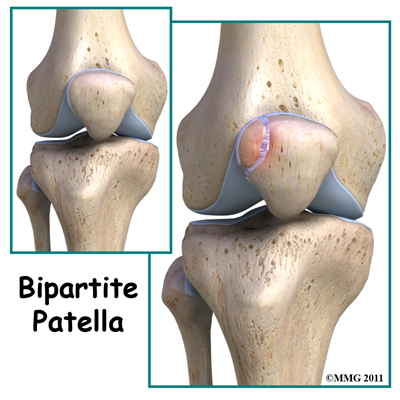 Bipartite patella is a congenital condition (present at birth) that occurs when the patella (kneecap) is made of two bones instead of a single bone. Normally, the two bones would fuse together as the child grows but in bipartite patella, they remain as two separate bones. About one per cent of the population has this condition. Boys are affected much more often than girls. When this condition is discovered in adulthood it is often an “incidental finding” meaning that when your health care professional was investigating another problem around the knee, the bipartite patella is discovered.
Bipartite patella is a congenital condition (present at birth) that occurs when the patella (kneecap) is made of two bones instead of a single bone. Normally, the two bones would fuse together as the child grows but in bipartite patella, they remain as two separate bones. About one per cent of the population has this condition. Boys are affected much more often than girls. When this condition is discovered in adulthood it is often an “incidental finding” meaning that when your health care professional was investigating another problem around the knee, the bipartite patella is discovered.
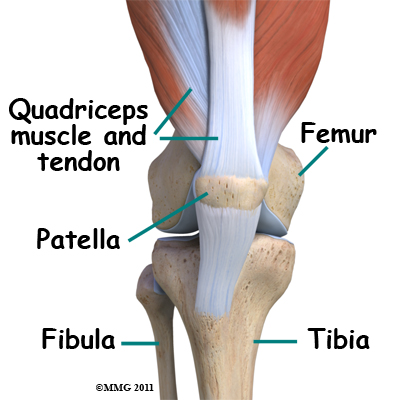
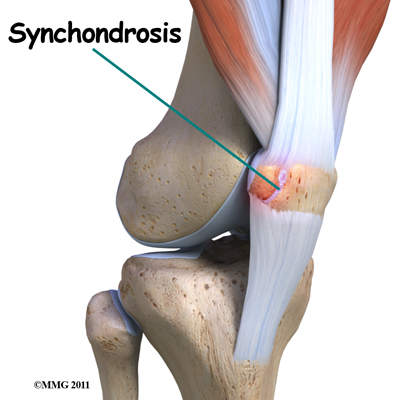 In the patella the most common location of the second bone is the supero-lateral (upper outer) corner of the patella but the bone can be at the bottom of the patella or along the side of the kneecap.
In the patella the most common location of the second bone is the supero-lateral (upper outer) corner of the patella but the bone can be at the bottom of the patella or along the side of the kneecap.